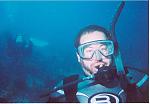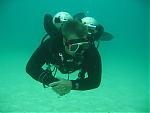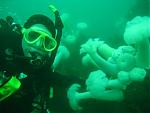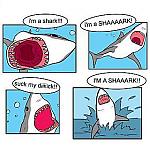Steel cylinders are great, but aluminum do have their place as well. After using some steel cylinders on vacation, I have to agree with you 100% on how much of a difference they actually do make. The additional air you get really increases your margin of safety as well, giving you enough air to get to your no-deco limit with a nice amount to spare.
The one thing I would warn is about your wife loosing all of her weight. Remember you should have enough ditchable weight that in an emergency situation she could drop it if necessary.
The only reason I still dive aluminum cylinders is because I own 9 of them right now and don't really want/have to spend the money it would take to replace them all.







 Reply With Quote
Reply With Quote


 Visit us at
Visit us at 



 Most run out of bottom time before air!
Most run out of bottom time before air!

